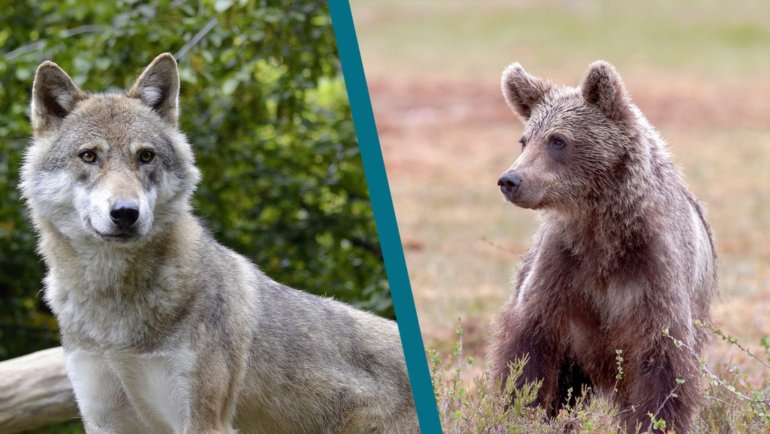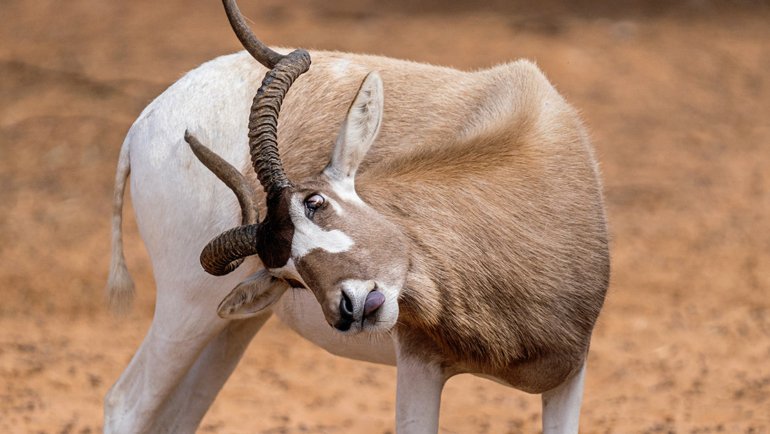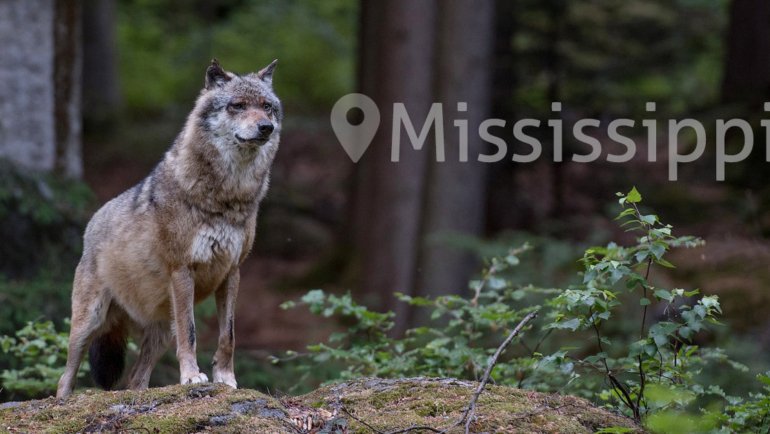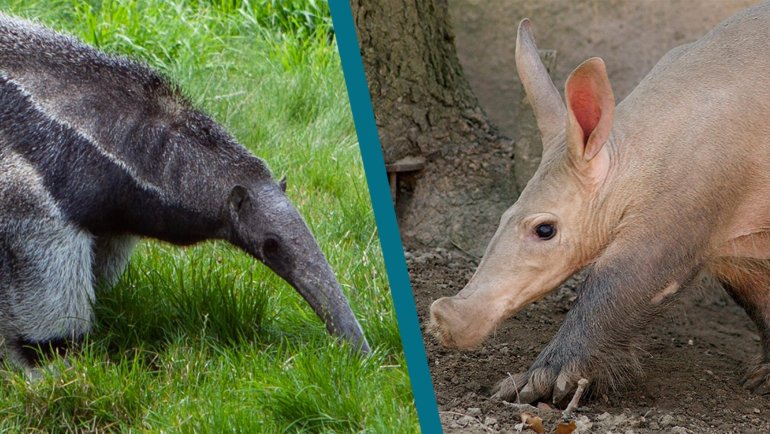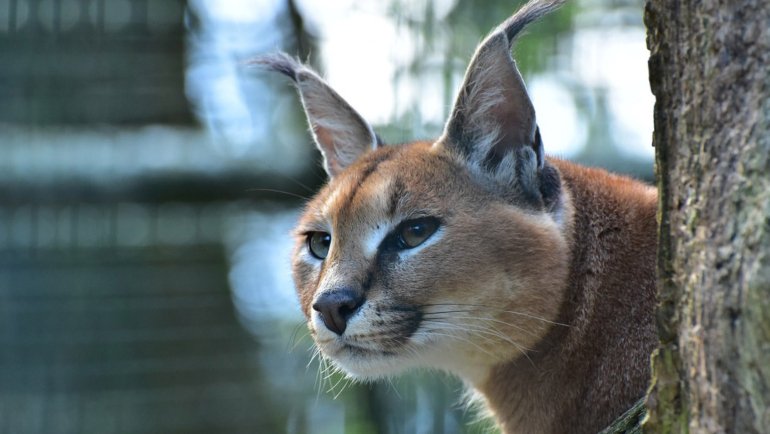African Wild Dogs, often known as “painted wolves” or “painted dogs,” are one of Africa’s most captivating and elusive predators. Their striking appearance, unique behaviors, and intricate social structures make them a subject of great interest.
While their numbers sadly dwindle, their allure remains undiminished. Here are 32 intriguing facts about these incredible creatures.
Essential Information About African Wild Dogs
- Scientific name: Lycaon pictus
- Type of Animal: Mammal
- Size: 60-75 cm (24-30 in) shoulder height, 70-110 cm (2.3-3.6 ft) in length.
- Weight: 20-25 kg (45-55 lbs).
- Distribution: Sub-saharan Africa, mainly Southern and East Africa.
- Habitat: Savannas, grasslands, open woodlands.
- Diet: Antelopes, gazelles, warthogs, rodents, birds.
- Predators: Lions, hyenas.
- Reproduction: They breed between April and July in Southern Africa, there is no fixed breeding season in other parts of Africa. There are on average 10 pups per litter.
- Conservation status: Endangered. Population is declining.
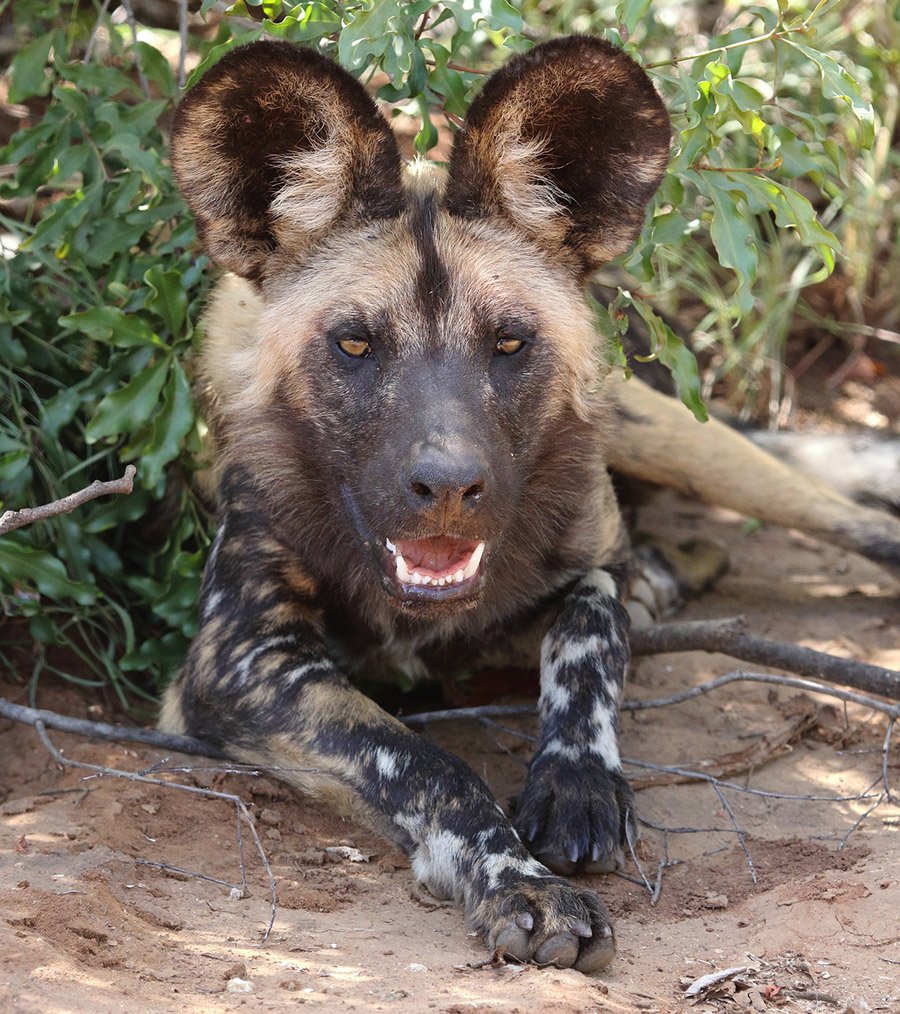
32 Amazing Facts About African Wild Dogs
- Scientific Moniker: The scientific name for the African Wild Dog is Lycaon pictus, which translates from Latin to “painted wolf.”
- No Two Alike: Much like human fingerprints, no two African Wild Dogs have the same coat pattern. This makes each individual uniquely identifiable.
- Big-Eared Wonders: Their large, rounded ears don’t just enhance their hearing. These ears help dissipate heat, keeping the dogs cooler during the sweltering African days.
- Not True Dogs: Despite their name, African Wild Dogs are not domestic dogs gone wild. They belong to their own unique genus, Lycaon.
- Non-Replaceable Teeth: African Wild Dogs have specialized molars called carnassials, which are excellent for shearing meat. However, they don’t have any replacement teeth. Once they lose one, it’s gone for good.
- Remarkable Stamina: While they may not be the fastest runners, African Wild Dogs are built for endurance. They can maintain a speed of around 37 mph (60 km/h) for up to 60 minutes!
- Highly Successful Hunters: Lions may be kings, but when it comes to hunting success rates, African Wild Dogs outperform them. They boast a success rate of around 80%, while lions hover around 30%.
- The Power of Teamwork: African Wild Dogs are pack animals that hunt cooperatively, often taking turns chasing and tiring out their prey.
- Only the Best Breed: In a wild dog pack, typically only the alpha male and alpha female breed, ensuring that only the strongest genes are passed on.
- Surrogate Moms: Non-breeding females in the pack often produce milk and help feed the alpha pair’s pups, showcasing their cooperative nature.
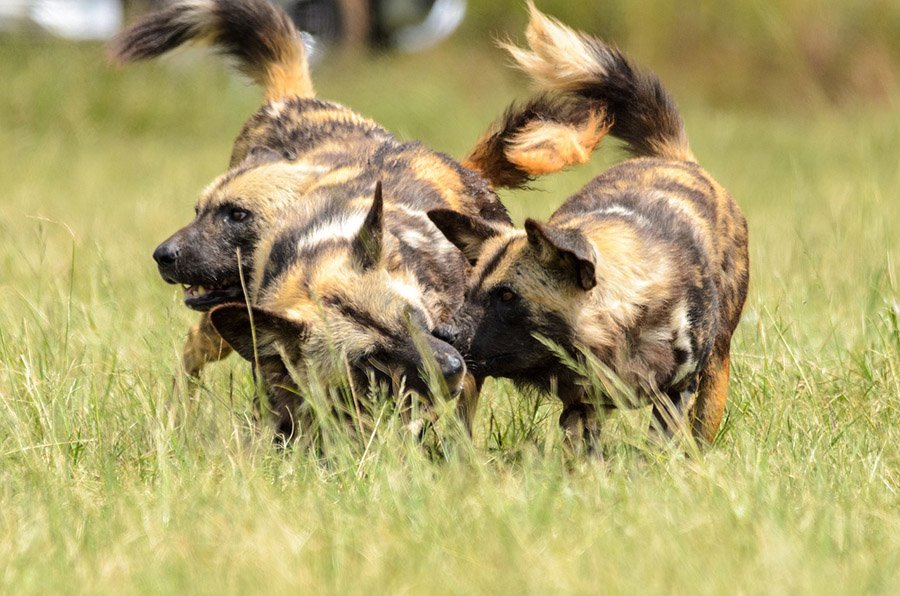
- Vocal Communicators: African Wild Dogs use a variety of sounds to communicate, from high-pitched twittering sounds during feeding to a unique “hoo” call that helps to reunite scattered pack members.
- Playful Creatures: Young and old alike, African Wild Dogs are known to be incredibly playful. This play not only strengthens social bonds but also hones their hunting skills.
- Democratic Decision Making: Before a hunt, members of the pack often engage in a “group sneeze.” The number of sneezes determines whether they’ll go on a hunt or not, almost like a voting system.
- Natural Pest Control: African Wild Dogs groom each other to strengthen social bonds, but this behavior also helps in removing ticks and other pests.
- A Tidy Den: Pups defecate away from the den, keeping their living quarters clean. This behavior reduces the risk of disease and keeps potential predators unaware of their exact location.
- Nomadic Nature: Unlike some predators that are territorial, African Wild Dogs lead a nomadic life, always on the move in search of prey.
- Adaptable Diet: While they prefer medium-sized ungulates, they can also hunt larger prey like wildebeests, especially when hunting cooperatively in larger packs.
- Pup Protectors: When pups are very young and vulnerable, older “babysitters,” often male dogs, stay behind to guard them during hunts.
- Bonded For Life: While it’s common for young males to leave their birth pack to find a mate, once they form a bond with a female, it usually lasts for life.
- Distinctive Digits: Unlike other canines that have five toes on their front feet, African Wild Dogs have only four.
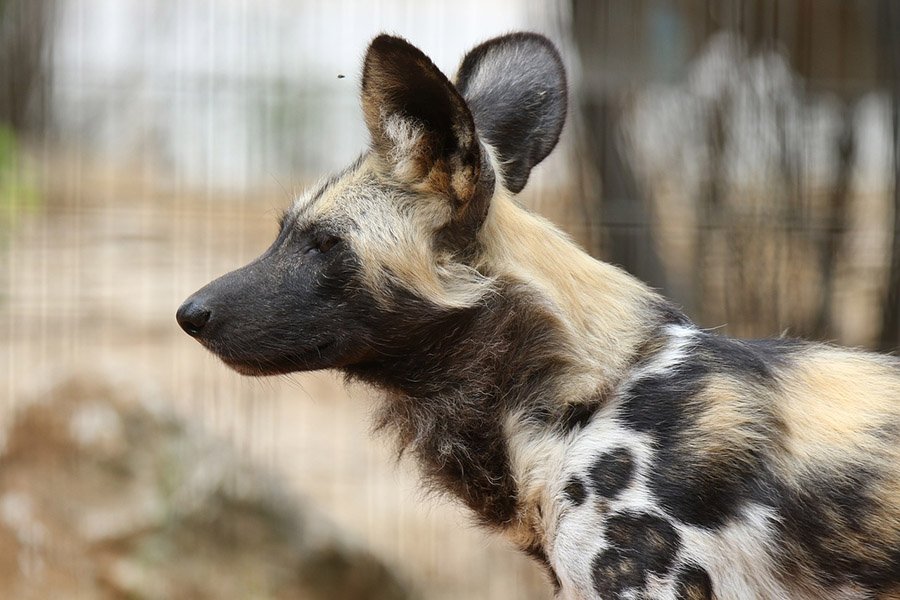
- Color Vision: Research suggests that African Wild Dogs, unlike many other carnivores, might have dichromatic color vision, allowing them to see shades of yellow and blue.
- Ritualized Greeting: After periods of rest or upon reuniting after a separation, pack members engage in enthusiastic greeting rituals, which involve lots of tail wagging and face licking.
- Matriarchal Packs: While both an alpha male and female lead the pack, the female often has a slightly dominant role, especially in decision-making related to movement and hunting.
- Impressive Swimmers: While not commonly known, African Wild Dogs are good swimmers and occasionally cross water bodies during their nomadic journeys.
- Early Independence: By the age of 12 to 14 months, pups are already participating in hunts with adult dogs.
- Formidable Bite: Their bite force is one of the most powerful among canines, a necessary adaptation for their rapid hunting style which relies on biting chunks out of live prey.
- Night Vision: African Wild Dogs have a tapetum lucidum, a layer in the eye that reflects light and improves vision in low light, aiding in dawn and dusk hunts.
- Predator Paradox: Despite being excellent hunters, African Wild Dogs often lose their kills to larger predators, especially lions and hyenas.
- Swift Drinkers: When it comes to drinking water, they do it quickly, probably to minimize the risk from crocodiles or other predators near waterholes.
- Whisker Secrets: Their whiskers, especially those around the face and chin, are believed to enhance their tactile senses and possibly play a role in hunting.
- A Desert Detour: While they primarily stick to savannas and grasslands, some packs have been known to venture into the edges of deserts.
- The Ears Have It: Their ears not only aid in thermoregulation and hearing but also play a role in expressing emotions and intentions to pack members.
Final Thoughts
These are just the tip of the iceberg when it comes to the myriad wonders of the African Wild Dog. Each fact paints a picture of a creature that’s not only supremely adapted to its environment but also showcases behaviors that are both complex and endearing. It underscores the importance of conserving such a remarkable species and ensuring it remains an integral part of the African wilderness.
Learn More About African Wild Dogs
- African Wild Dog: Characteristics, Diet, Facts & More [Fact Sheet]
- African Wild Dog Habitat: Where Do Painted Dogs Live?
- Why Are African Wild Dogs Endangered? All About The Threats They Face
- African Wild Dog vs. Hyena: Their Key Differences & Who Would Win a Fight?
- What Do African Wild Dogs Eat? An Exploration of Their Diet
- African Wild Dog Bite Force: Into the Jaws of The Painted Dog
- Can African Wild Dogs Be Domesticated and Be Pets?
- African Wild Dog Predators: Their Top 5 Natural Enemies
- Are African Wild Dogs Dangerous? Do They Attack Humans?
- The Secrets Behind The African Wild Dog’s Hunting Success Rate
- African Wild Dog vs. Wolf: A Comparison & Who Wins in a Fight?
